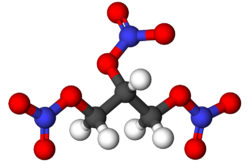Diluting and Mixing I.V. Solutions
- Page ID
- 50753
\( \newcommand{\vecs}[1]{\overset { \scriptstyle \rightharpoonup} {\mathbf{#1}} } \)
\( \newcommand{\vecd}[1]{\overset{-\!-\!\rightharpoonup}{\vphantom{a}\smash {#1}}} \)
\( \newcommand{\id}{\mathrm{id}}\) \( \newcommand{\Span}{\mathrm{span}}\)
( \newcommand{\kernel}{\mathrm{null}\,}\) \( \newcommand{\range}{\mathrm{range}\,}\)
\( \newcommand{\RealPart}{\mathrm{Re}}\) \( \newcommand{\ImaginaryPart}{\mathrm{Im}}\)
\( \newcommand{\Argument}{\mathrm{Arg}}\) \( \newcommand{\norm}[1]{\| #1 \|}\)
\( \newcommand{\inner}[2]{\langle #1, #2 \rangle}\)
\( \newcommand{\Span}{\mathrm{span}}\)
\( \newcommand{\id}{\mathrm{id}}\)
\( \newcommand{\Span}{\mathrm{span}}\)
\( \newcommand{\kernel}{\mathrm{null}\,}\)
\( \newcommand{\range}{\mathrm{range}\,}\)
\( \newcommand{\RealPart}{\mathrm{Re}}\)
\( \newcommand{\ImaginaryPart}{\mathrm{Im}}\)
\( \newcommand{\Argument}{\mathrm{Arg}}\)
\( \newcommand{\norm}[1]{\| #1 \|}\)
\( \newcommand{\inner}[2]{\langle #1, #2 \rangle}\)
\( \newcommand{\Span}{\mathrm{span}}\) \( \newcommand{\AA}{\unicode[.8,0]{x212B}}\)
\( \newcommand{\vectorA}[1]{\vec{#1}} % arrow\)
\( \newcommand{\vectorAt}[1]{\vec{\text{#1}}} % arrow\)
\( \newcommand{\vectorB}[1]{\overset { \scriptstyle \rightharpoonup} {\mathbf{#1}} } \)
\( \newcommand{\vectorC}[1]{\textbf{#1}} \)
\( \newcommand{\vectorD}[1]{\overrightarrow{#1}} \)
\( \newcommand{\vectorDt}[1]{\overrightarrow{\text{#1}}} \)
\( \newcommand{\vectE}[1]{\overset{-\!-\!\rightharpoonup}{\vphantom{a}\smash{\mathbf {#1}}}} \)
\( \newcommand{\vecs}[1]{\overset { \scriptstyle \rightharpoonup} {\mathbf{#1}} } \)
\( \newcommand{\vecd}[1]{\overset{-\!-\!\rightharpoonup}{\vphantom{a}\smash {#1}}} \)
Preparation of intravenous fluids can be complicated, because they must be isotonic, yet sometimes combine drugs, nutrients, and electrolytes at specific concentrations. Often it is convenient to prepare a needed solution, or a series of solutions of known concentrations by first preparing a single stock solution as described in Example 1 from Solution Concentrations. Aliquots (carefully measured volumes) of the stock solution can then be diluted to any desired volume. In other cases it may be inconvenient to weigh accurately a small enough mass of sample to prepare a small volume of a dilute solution. Each of these situations requires that a solution be diluted to obtain the desired concentration.
Example \(\PageIndex{1}\): Concentration of Solution in I.V.
Isotonic I.V. solutions are often prepared by dilution A doctor orders 500 mL/day of an I.V. pediatric KCl maintenance fluid. A pipet is used to measure 12.5 ml of 2.00 M KCl into a 500.00-ml sterile volumetric flask. Sterile water is carefully added up to the mark on the flask. What is the concentration of the diluted solution?
Solution To calculate concentration, we first obtain the amount of KCI in the 12.5 ml (12.5 cm3) of solution added to the volumetric flask:
\[n_{\text{KCl}}=\text{12}\text{.5 cm}^{\text{3}}\text{ }\times \text{ }\dfrac{\text{2}\text{.00 mmol}}{\text{1 cm}^{\text{3}}}=\text{25}\text{.0 mmol} \nonumber\]
Dividing by the new volume gives the concentration
\[c_{\text{KCl}}=\dfrac{n_{\text{KCl}}}{V}=\dfrac{\text{25}\text{.00 mmol}}{\text{500}\text{.00 cm}^{\text{3}}}=\text{0.050 mmol cm}^{\text{-3}} \nonumber \]
Thus the new solution is 0.050 M.
Example \(\PageIndex{2}\): Preparing an I.V.
In WW I it was discovered that soldiers handling explosives frequently had very low blood pressure, and the cause was determined to be the nitroglycerine in the explosives.

Nitroglycerine, C3H5N3O9
Now nitroglycerine is used orally for heart conditions, and intravenous nitroglycerine is used to stabilize high blood pressure prior to operations[1]. What volume of 0.00350 M nitroglycerine solution[2] is required to prepare a 250 ml I.V. containing 8.81 x 10-4 M nitroglycerine? The total mass of nitroglycerine in the solution is only 0.050g.
Solution Using the volume and concentration of the desired solution, we can calculate the amount of nitroglycerine required. Then the concentration of the original solution (0.316 46 M) can be used to convert that amount of KI to the necessary volume. Schematically
\[\text{V}_{\text{new}} \xrightarrow {c_{new}} \text{n}_{\text{nitroglycerine}}\xrightarrow{c_{\text{old}}}V_{\text{old}} \nonumber\]
\[\text{V}_{\text{old}}=\text{250}\text{.00 cm}^{\text{3}}\text{ }\times \text{ }\dfrac{\text{8}\text{.81} \times \text{10}^{-4} \text{mmol}}{\text{1 cm}^{\text{3}}}\text{ }\times \text{ }\dfrac{\text{1 cm}^{\text{3}}}{\text{0}\text{.316 46 mmol}}\text{ }=\text{62}\text{.90 cm}^{\text{3}} \nonumber \]
Thus we should dilute a 62.9-ml aliquot of the stock solution to 250.00 ml. This could be done by measuring 62.9 ml from a buret into a 250.00-ml volumetric flask and adding water up to the mark.
From ChemPRIME: 3.11: Diluting and Mixing Solutions
Contributors and Attributions
Ed Vitz (Kutztown University), John W. Moore (UW-Madison), Justin Shorb (Hope College), Xavier Prat-Resina (University of Minnesota Rochester), Tim Wendorff, and Adam Hahn.


